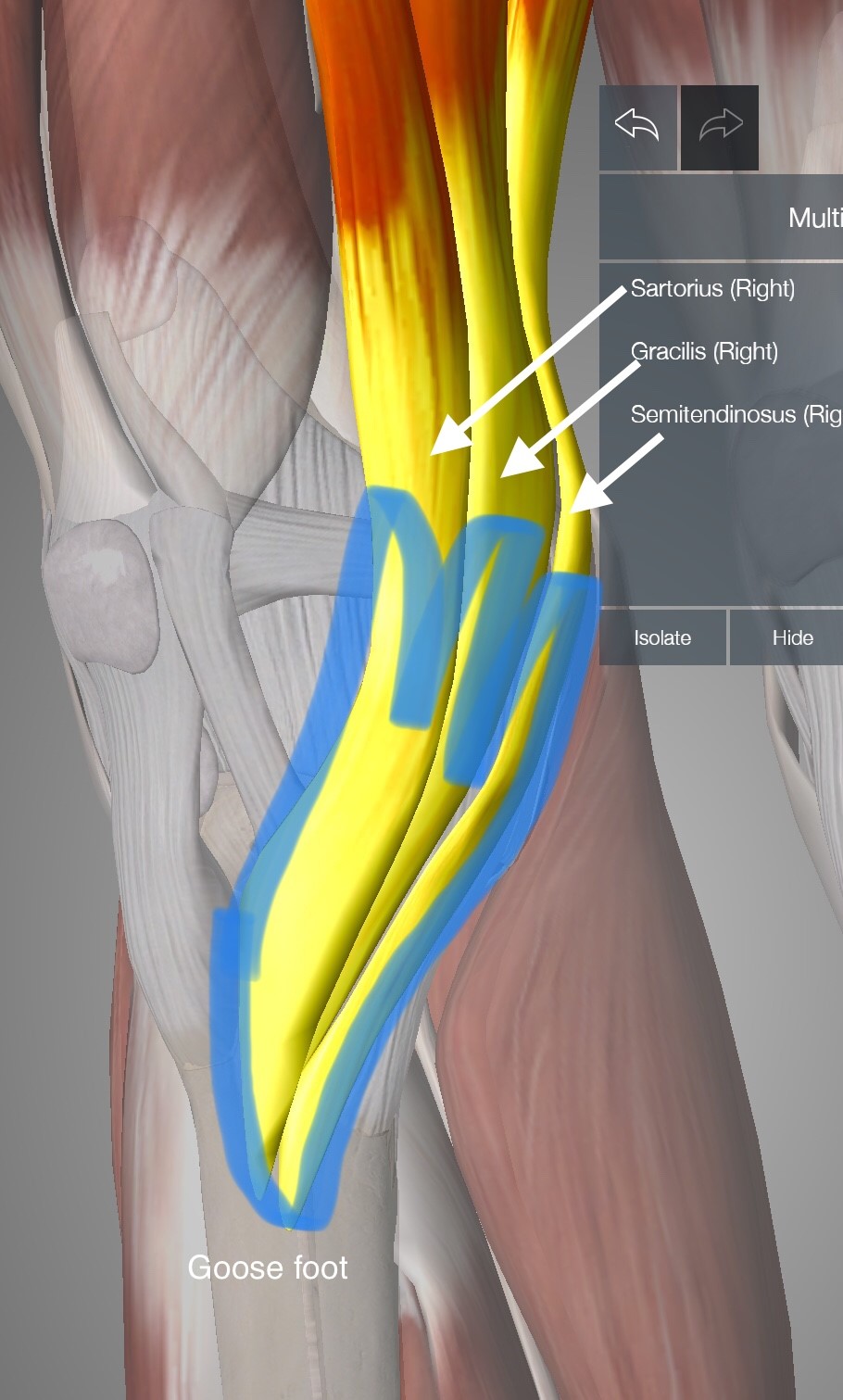

A cup of water is frozen in a Styrofoam container. Ice cubes wrapped in a thin layer of toweling or a bag of frozen vegetables applied to the area works well.Īthletes are often instructed by their physical therapist or athletic trainer to perform an ice massage. The ice is applied three or four times each day for 20 minutes at a time. Ice and antiinflammatory medications can be used in the early, inflammatory phase. This type of approach is called relative rest Patients are advised to avoid stairs, climbing, or other irritating activities. This will give time for the bursa to quiet down and for the pain to subside. Stopping the activity that brings on or aggravates the symptoms is the first step toward pain reduction.īedrest is not required but it may be necessary to modify some of your activities. The goal of treatment for overuse injuries such as pes anserine bursitis is to reduce the strain on the injured tissues. If you can straighten your knee all the way in this position, then you do not have tight hamstrings. The amount of knee flexion is an indication of how tight the hamstrings are. The knee is straightened as far as possible. This is done in the supine position (lying on your back). The examiner will also assess hamstring tightness. Fluid from the bursa may be removed and tested if infection is suspected. An MRI may be needed to look for damage to other areas of the medial compartment of the knee. An X-ray is needed to rule out a stress fracture or arthritis. DiagnosisĪ history and clinical exam will help the physician differentiate pes anserine bursitis from other causes of anterior knee pain, such as patellofemoral syndrome or arthritis.

The pain is made worse by exercise, climbing stairs, or activities that cause resistance to any of these tendons. This occurs when other structures are also damaged such as the meniscus (cartilage). Some patients also have pain in the center of the tibia. This term refers to the front inside edge of the tibia. Proximedia is short for proximal and medial. This is referred to as the anterior knee or proximedia tibia. The pes anserine is located about two to three inches below the joint on the inside of the knee. The patient often points to the pes anserine as the area of pain or tenderness. A turned out position of the knee or tibia, genu valgum (knock knees), or a flatfoot position can lead to pes anserine bursitis. And alignment of the lower extremity can be a risk factor for some individuals.

The bursa then becomes inflamed and tender or painful.Īnyone with osteoarthritis of the knee is also at increased risk for this condition. A contusion to this area results in an increased release of synovial fluid in the lining of the bursa. It can also be caused by trauma such as a direct blow to this part of the knee. Improper training, sudden increases in distance run, and running up hills can contribute to this condition. Overuse of the hamstrings, especially in athletes with tight hamstrings is a common cause of goosefoot. The MCL is underneath the semitendinosus tendon. The pes anserine bursa provides a buffer or lubricant for motion that occurs between these three tendons and the medial collateral ligament (MCL). This area is called the pes anserine or pes anserinus. Together, these three tendons splay out on the tibia and look like a goosefoot. The sartorius muscle bends and externally rotates the hip. The semitendinosus tendon is also just behind the attachment of the sartorius muscle. The gracilis muscle adducts or moves the leg toward the body. Just above the insertion of the semitendinosus tendon is the gracilis tendon. Medial refers to the inside of the knee or the side closest to the other knee. It inserts into the medial surface of the tibia and deep connective tissue of the lower leg. The semitendinosus wraps around from the back of the leg to the front. There are three tendons of the hamstring: the semitendinosus, semimembranosus, and the biceps femoris. The hamstring muscle is located along the back of the thigh. The pes anserine bursa is a small lubricating sac between the tibia (shinbone) and the hamstring muscle. The pes anserine bursa is the main area affected by this condition.

Bursae can become inflamed and irritated causing pain and tenderness. Bursae can also protect other tendons as tissues glide over one another. The bursa is a small sac that cushions the bone from tendons that rub over the bone. Colgan Osteopath Kettering Pes Anserine Bursitis of the Kneeīursitis of the knee occurs when constant friction on the bursa causes inflammation.


 0 kommentar(er)
0 kommentar(er)
